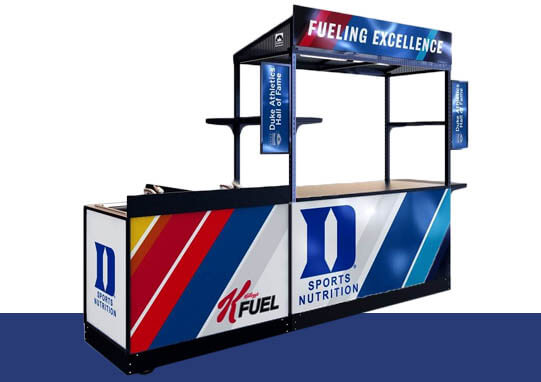If you want to learn how to start a street food cart business, but you’re not sure where to begin, we want to help. Cart-King Intl Carts and Kiosks has been in the mobile vending business a long time, over 20 years. During that time we've helped hundreds of customers either start or grow a food cart business.
Guide table of contents:
Why start a street food cart business?
The street food industry offers unique opportunities for aspiring business owners. Here's why it’s a great choice:
- Low Startup Costs: Compared to brick-and-mortar restaurants, food carts are significantly less expensive to launch. Average startup costs range from $5,000 to $50,000, depending on location and equipment.
- High Mobility: Food carts allow you to adapt to changing customer trends and foot traffic patterns.
- Growing Market: The U.S. street food industry generates over $3 billion annually, and the demand for diverse, convenient food options continues to rise.
- Diverse Cuisine Options: Food carts cater to customers seeking everything from global cuisine to local favorites, making it a highly versatile business model.
So how does an entrepreneur get started in the street food business?
As we can well appreciate as business owners ourselves, starting any business, including a street food business, seems overwhelming at first. There's a seeming multitude of considerations to make, from the legalities and compliance to how to distinguish yourself from similar businesses in a highly competitive industry.
There are a couple of things we would like to suggest at this juncture. The first is to keep it simple and secondly, to break it down into small, logical steps. Really, when you think about it, there are only a few simple steps you need to take:
- Develop a business plan
- Establish your food business budget
- Obtain the appropriate vending licenses
- Decide what street food you are going to sell
- Choose what equipment you are going to need
- Choose the food cart you are going to buy
- Profit
With that said, we would like to suggest that the best way of sorting everything out and being able to visualize it starts with developing a business plan.
1. Develop a business plan
A food cart business can be very profitable, this is for sure, but it takes careful thought to ensure success. Taking the time to write a good business plan to will help you visualize what it looks like from start to finish.
The best place to start when considering whether or not to start a street food cart business is establishing your budget. What can you afford to spend on not just the food cart itself, but also the related costs of operation. These expenditures can include transportation of the cart to the site, the food ingredients, beverage items you want to offer, maintenance costs and related equipment.
In your business plan you can also establish your business model. To help with that, ask yourself the following questions:
- What will your business name be?
- Who are the principal business members?
- Who are your customers?
- What are your competitive advantages?
- What type of street food do you want to sell?
- How are you going to price your food?
- Where do you want to vend your food?
- How are you going to market your business?
- What will your operating hours be?
- What is your projected sales revenue for the first three years?
If you need help knowing where to start, we wrote an ebook that includes a business plan template. This ebook is also full of statistics, cash flow projections, pricing guides and other details you need to get started as a mobile vendor.
2. Establish your food business budget
By establishing your budget, you’ll know what you have to spend on the food cart and what you can expect to spend in the first months while you get your sales rolling. If you are not sure where to start, we have you covered. We've written an extensive and comprehensive guide on what to know when buying a food cart that covers everything from the cost of the food cart itself, down to licenses and operating expenses.
We are also pleased to offer a free food cart sales projection spreadsheet in Excel format that you can download. This spreadsheet breaks down the various expenditures you can expect to realize and keeps a running total over a three year period to help you visualize the investment you'll need to make.
3. Obtain licenses to vend mobile street food
Making sure you are in compliance with regulations by obtaining the proper training and licensing is a critical step in starting a street food business. There's a lot to know about licensing, depending on what state you plan on doing business in. We've addressed the licensing requirements in depth in this article. Here is a brief summary of the business licenses you may need to acquire to operate.
- Business registration. Every state in the USA requires a business to register and obtain a license to operate a food cart business. These licenses are specific to the location in which you want to operate in, so you need to go to your local city or county government office to obtain one.
- Health Department permit. State health departments have a food safety program in place to ensure that consumers are protected from the possibility of disease or disability from food-born or waterborne illness. Street vendors need to have this permit issued to serve customers.
- Food Managers Permit. Some states no longer require each employee to have a Food Handler Permit. However, the states that do not typically require that a manager or owner with a Food Manager Permit be physically present during operating hours.
- Street vendor license. In addition to a state business license, a mobile food vendor will be required to get a local business license, or street vendor license, to vend in a specific city or county. This license will allow you to sell food in public venues in that area.
- Fire department permit. Some vendors will offer a food cart for sale with cooking equipment built into it, such as a gas or electric grill, hot plates or other gas and electric appliances. For that food cart to be allowed to operate and serve food in the USA, your cooking equipment and setup needs to be inspected by the local fire department where you want to be vending.
- Federal tax permit (Employer Identification Number, or EIN). To operate a food business in the USA, you will be required to obtain an Employer Identification Number (EIN) from the Internal Revenue Service (IRS). This permit allows you to conduct your food business and pay federal taxes on the revenue earned.
Visit your local government’s website or the Small Business Administration for specific requirements.
Now that you have a business plan, a cart in mind and what you need to equip it, the next matter of business is to plan a food cart menu. While we already have a guide on planning your menu, we’ll provide a brief summary here.
To plan an effective menu, you’ll first want to assess your cooking skills and what your cuisine specialties are. We have found that to be the most successful in the food business, you want to focus on your strengths. Are there regional foods that you were raised on? How about international cuisine? Perhaps you prefer comfort food, or maybe BBQ with pulled pork, ribs and mac and cheese.
There is also something to be said for keeping it simple, such as tacos, hamburgers or even hot dogs. Here's the thing. One of the biggest road blocks to starting up any venture is noticing how many players are already there. It can be a little intimidating and may cause you to rethink.
It is understandable, however since this guide we wrote a further post outlining our top 10 food cart menu ideas. You might like to take a look at that list and see if it gets your wheels turning. There is one point in there that we'd like to highlight. Take a look at the competition and either bring something different, or find what's popular and do it better.
Whichever fare you decide to serve, prepare a list of ingredients you will need to keep on the cart. Also make a list of what equipment you might need from the list below to prepare and sell your menu items.
Best selling items for a street food cart
When planning your food cart menu, it is good to keep in mind what the best selling items are. Usually food tastes vary by region, so what might sell the best in one region might not do very well in another.
Inevitably, however, when selling street food from a mobile vendor, the best selling items are takeout items that can be eaten while on the move. Think back to when you might have stopped at a street food cart to buy something for lunch or a quick snack. What were your favorites?

Here is a list of ideas that might help get your wheels turning.
- Hot dogs
- Breakfast tacos and burritos
- Pulled pork sandwiches
- Pizza, calzones and panzerottis
- Bibim box lunches
- Fried chicken
- Mac and Cheese
- Croissants
- Pretzels
- Fresh salads
- Fresh muffins and bagels
- Waffles
- Smoothies
- Gyros
While not exhaustive, this is a great list of food that sells best on a food cart and all of them are rather easy to prepare when you're vending from a mobile kitchen.
READ MORE: What's Hot on Food Carts and Food Truck Menus
5. Decide what street food cart equipment you need
To serve your recipes of choice, you will want to make sure you have the right equipment on the cart to prepare and serve your customers. While the list will vary depending on your business model and chef abilities, a general list of equipment to consider is as follows:
- Hot plates, fryers, and grills
- Refrigeration units
- Portable sinks
- POS systems
- Storage containers and serving supplies
- A source of power
Choose equipment that meets your menu needs and complies with health regulations.
6. Choose the right cart
After you establish what you need and what you can afford to spend, the next step is to choose the right food cart for your mobile business model.
Whichever business model you have decided, one of the most important aspects is looks. Your business needs to look good from a distance to attract the customers. First impressions are made by “curb appeal”. As such you will want to make sure your food cart looks as good as the cuisine itself.
However, there is another important aspect when deciding which model and style to buy, and that is functionality. After you have made the first impression, you then want to make sure your meals are as good of those of a restaurant. The right functionality will allow you to incorporate the necessary equipment into your cart so that you can deliver a top-quality fare. This is the recipe for getting and growing your food sales.
Take a look at our simple guide to our street food carts where we break down the details of our most popular models.
7. Market your food cart business
Marketing plays a crucial role in attracting customers. Key strategies:
- Social Media: Share mouthwatering photos and location updates on platforms like Instagram and Facebook.
- Loyalty Programs: Offer discounts or free items to repeat customers.
- Local Partnerships: Collaborate with nearby businesses or participate in events to boost visibility.
Leverage tools like Hootsuite for social media management and analytics.
Best practices for success
- Stay Compliant: Regularly review local regulations to avoid fines or shutdowns.
- Be Adaptable: Monitor customer preferences and adjust your menu accordingly.
- Prioritize Hygiene: Maintain strict cleanliness standards to build trust and loyalty.
Wrapping it up
Starting a street food cart business is a lucrative venture, with benefits for both entrepreneurs and customers. The best way to succeed in this business is to make informed decisions armed with the most information possible.
Cart King Intl Carts and Kiosks has been selling food carts for over 20 years, giving us a wealth of knowledge and experience to share. We’re here to help you in any way we can.
You may also like to speak to a live person to learn more about how to start a street food cart business. We're available from 9 to 5 Central, Monday to Friday and we invite you to give us a call at 1-877-986-7771.
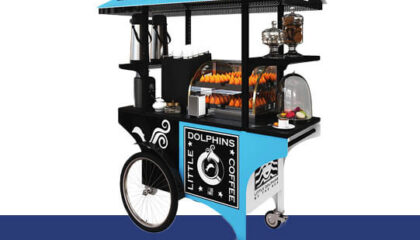 Read more +
September 13, 2024 By kingmike in Cart and Kiosk Articles
Read more +
September 13, 2024 By kingmike in Cart and Kiosk Articles
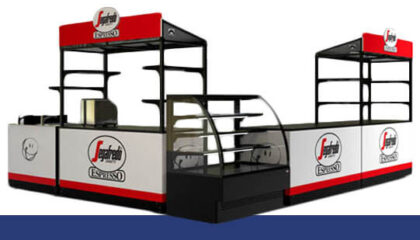 Read more +
June 3, 2024 By kingmike in Cart and Kiosk Articles
Read more +
June 3, 2024 By kingmike in Cart and Kiosk Articles
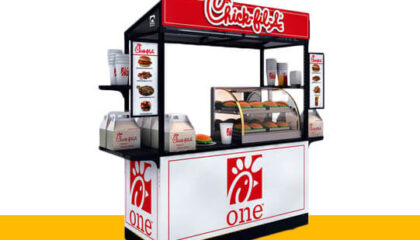 Read more +
May 8, 2024 By Cart King in Cart and Kiosk Articles
Read more +
May 8, 2024 By Cart King in Cart and Kiosk Articles
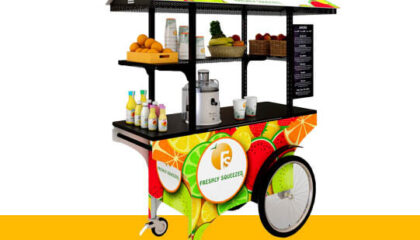 Read more +
April 24, 2024 By Cart King in Cart and Kiosk Articles
Read more +
April 24, 2024 By Cart King in Cart and Kiosk Articles
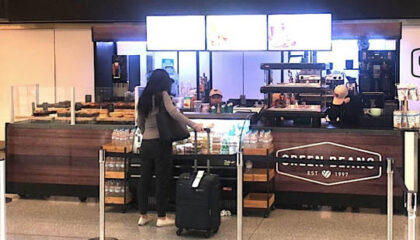 Read more +
April 9, 2024 By Cart King in Cart and Kiosk Articles
Read more +
April 9, 2024 By Cart King in Cart and Kiosk Articles
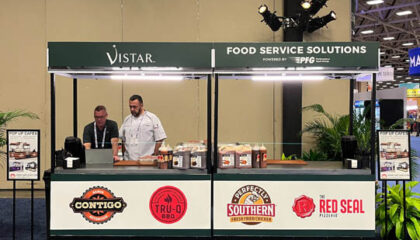 Read more +
By Cart King in Cart and Kiosk Articles
Read more +
By Cart King in Cart and Kiosk Articles
 Read more +
April 8, 2024 By Cart King in Cart and Kiosk Articles
Read more +
April 8, 2024 By Cart King in Cart and Kiosk Articles
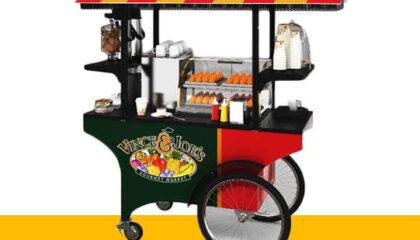 Read more +
April 6, 2024 By Cart King in Cart and Kiosk Articles
Read more +
April 6, 2024 By Cart King in Cart and Kiosk Articles
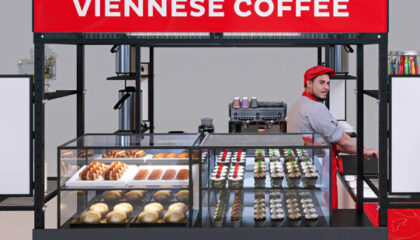 Read more +
April 2, 2024 By Cart King in Cart and Kiosk Articles
Read more +
April 2, 2024 By Cart King in Cart and Kiosk Articles
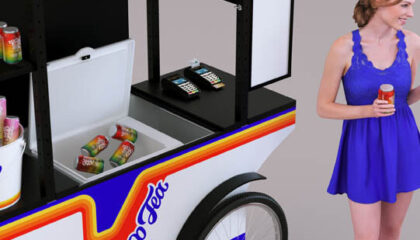 Read more +
March 10, 2024 By Cart King in Cart and Kiosk Articles
Read more +
March 10, 2024 By Cart King in Cart and Kiosk Articles


